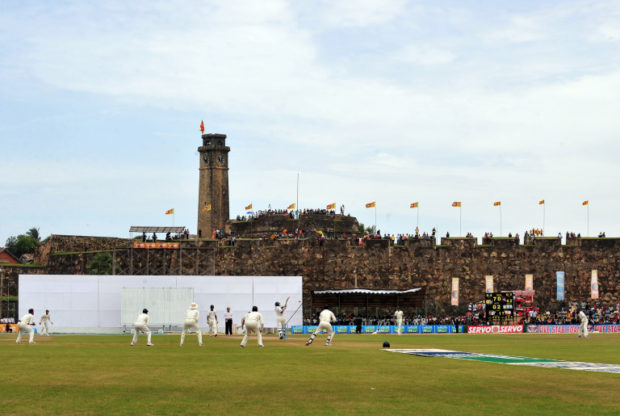
Sri Lanka’s picturesque Galle cricket stadium could be demolished because its pavilion stand violated heritage laws protecting a 17th century Dutch fort, the government said Friday.
Cultural affairs minister Wijeyadasa Rajapakshe told parliament the fort risked loosing UNESCO World Heritage status because of unauthorized construction, including the 500-seat pavilion.
“We have to decide if we want to remain in the World Heritage list or keep the pavilion,” Rajapakshe said.
The Galle stadium is one of the most renowned in the world because of its setting.
Rajapkshe noted however that the government plans to build another stadium in Galle, 115 kilometres (72 miles) south of Colombo. “We could have another cricket grounds in Galle soon,” he added.
The Galle pavilion was built in 2008, four years after the grounds was devastated by the December 2004 Asian tsunami which killed at least 31,000 people in the country.
Galle, which favors spinners, has been a lucky venue for the national team. Sri Lanka has won a majority of matches played there since 1998.
Last week, they won the first Test against South Africa by 278 runs with two days to spare.
“There will be no immediate demolition of the Galle Stadium,” sports minister Faiszer Musthapha said.
“We want to maintain the World Heritage status for the fort. We will work out an alternative” for the cricket stadium, he added.
Official sources said a November Test match against England could be the final international at the current Galle stadium.
Southern development minister Sagala Ratnayaka noted that the UNESCO did not object to the cricket grounds, but wanted unauthorized structures around it removed, including the two-storey pavilion.
The building named after former president Mahinda Rajapakse obstructs the view of the fort from the main Galle road.
The fort was initially built by the Portuguese who colonized the island in 1505. However, many of the buildings at the site were built by the Dutch who drove out the Portuguese in 1640.
The English captured Galle in 1796, but did not make any significant alterations to the structures in the walled city. It is now a key tourist attraction. JB
RELATED STORIES:
Sweden’s Nationalmuseum reopening after 5-year transformation
Art historian says museums ban taking of photos so they can sell own images

